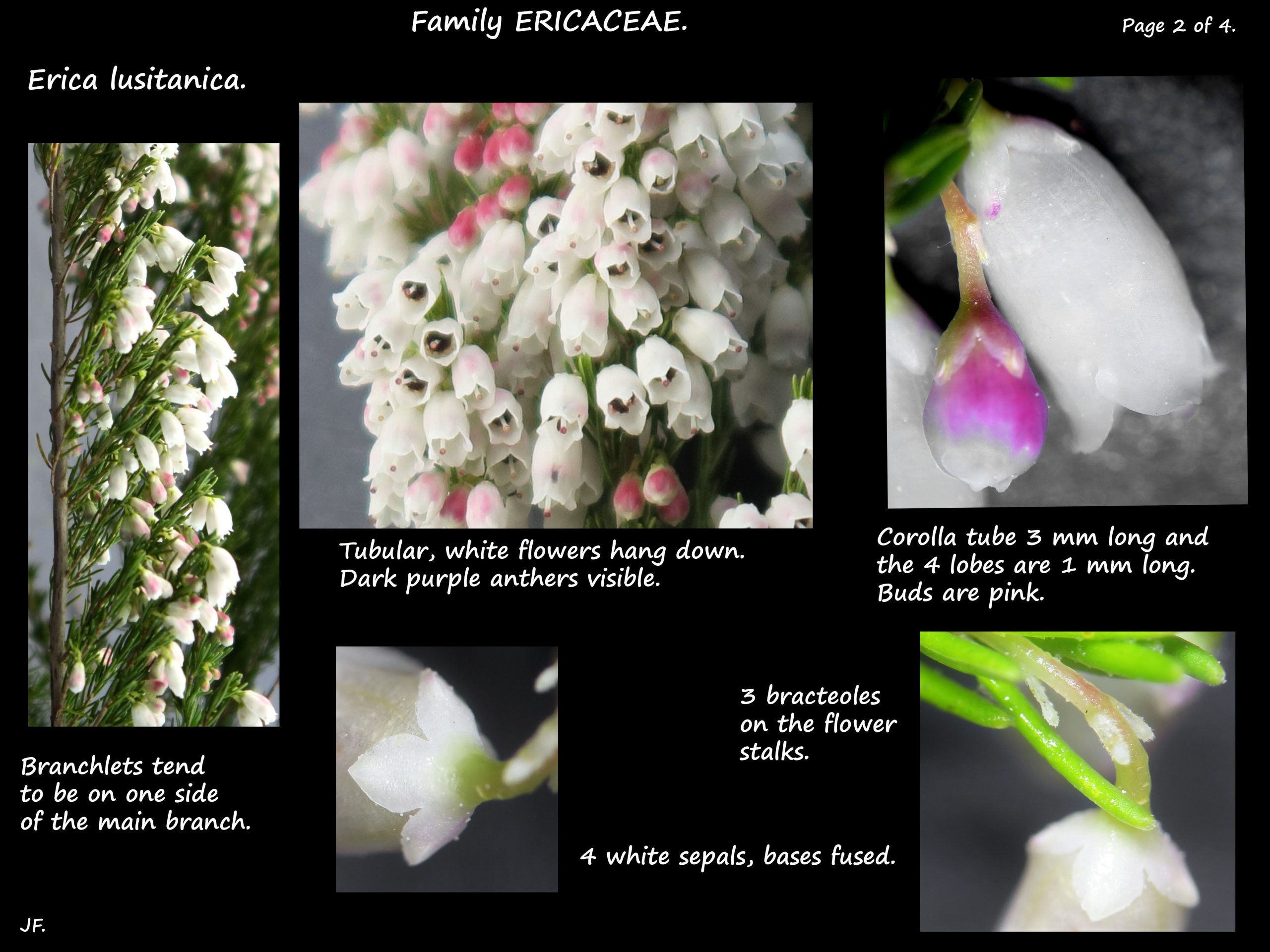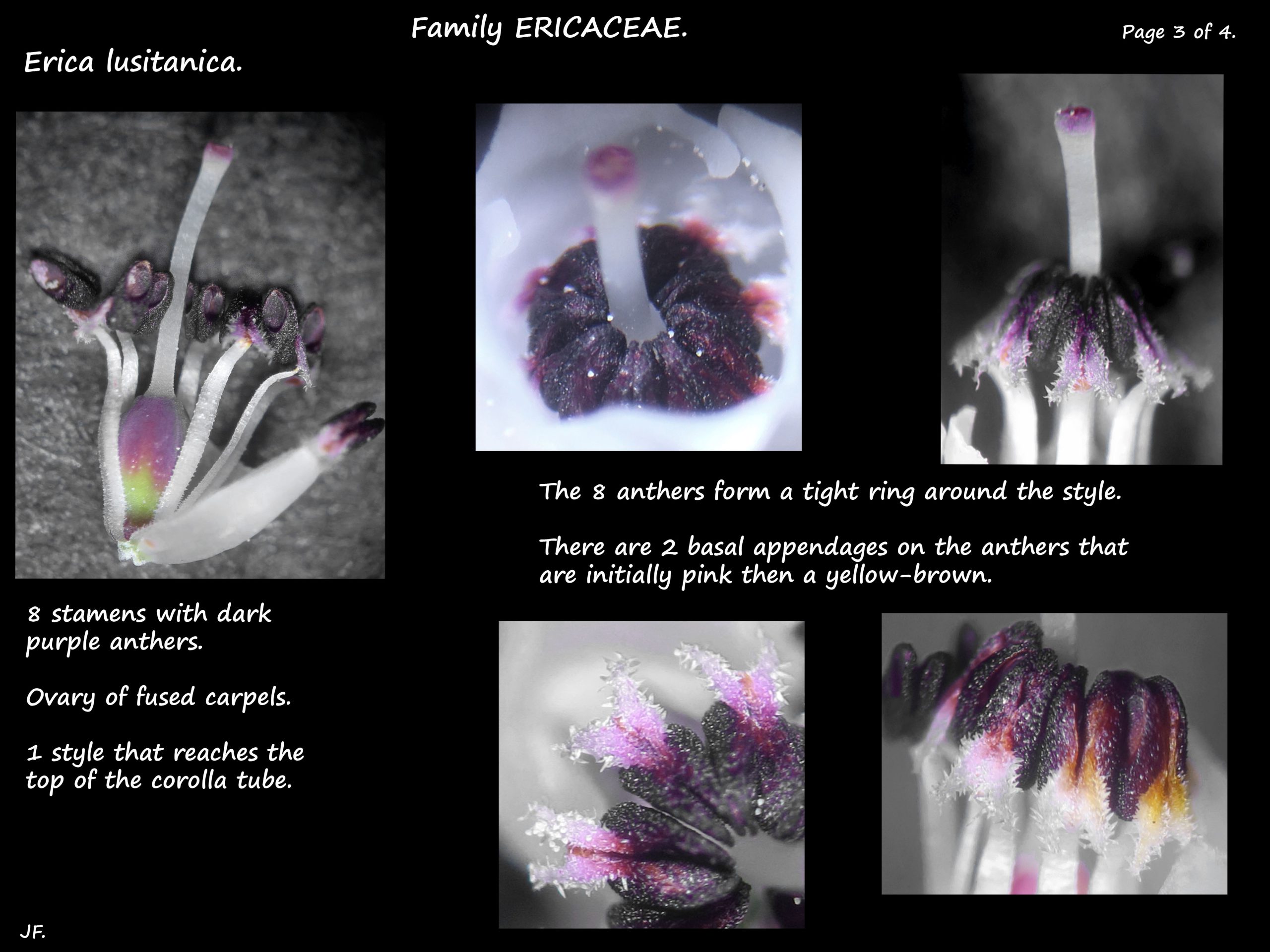Erica lusitanica.
Known as Portuguese or Spanish heath it is naturalised in Australia and widely cultivated.
It is an environmental weed in the southern states.
An evergreen shrub up to 2 -3 m high.
Young stems are green and older ones brown and woody.
They have 1 mm long unbranched hairs.
The needle-like leaves are alternately placed but so close they appear to be in whorls of 3 or 4.
They are under 10 mm long and 1 mm wide.
The edges are rolled under forming a longitudinal groove on the lower surface.
They have a very short or no stalk.
Inflorescences are on the ends of small side branches along the main stem.
They consist of 1 to a few white, tubular flowers that hang down.
The calyx has 4 white sepals under 1 mm long with fused bases.
Flowers are on short stalks that have 2 or 3 bracteoles.
Buds are pink and older flowers are brown.
There are 4 petals, 3 to 5 mm long that are fused for most of their length.
The blunt lobes are 1 mm long.
There are 8 stamens with white filaments with hairs basally.
The deep purple anthers form a tight ring around the style.
The anthers open via short slits and there is a basal appendage.
The ovary consists of fused carpels.
There is a single style and stigma which reaches the top of the corolla tube.
The fruit is a tiny capsule, 2 to 3 mm long that holds up to 100 seeds.
E. arborea has branched hairs on the stems, smaller leaves only 3 to 5 mm long and its white flowers have a dark red rim.
E. quadrangularis has unbranched hairs, leaves up to 3 mm long and 3 mm white to pink flowers.
J.F.





